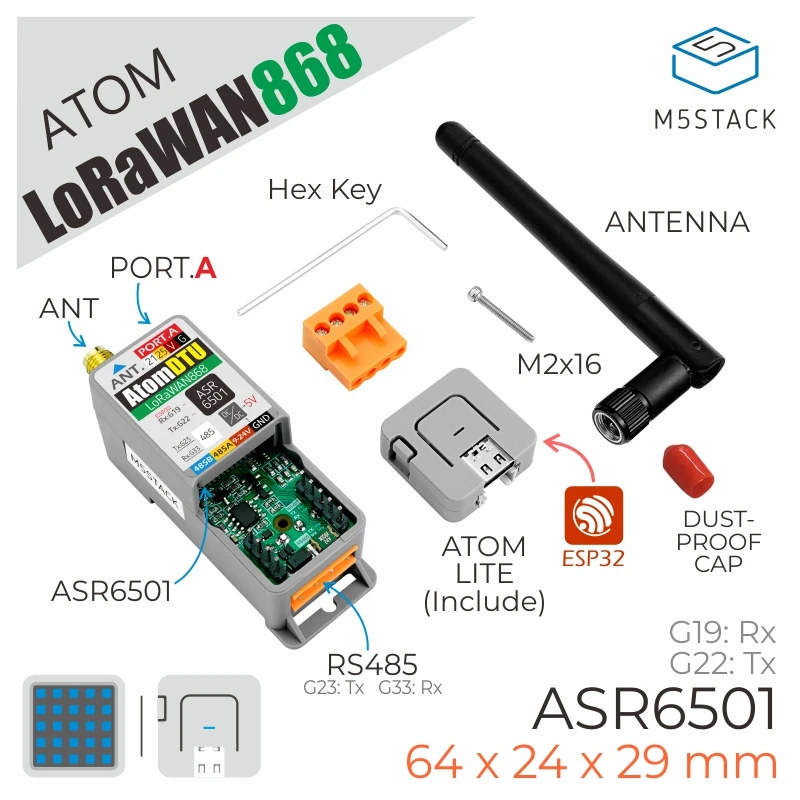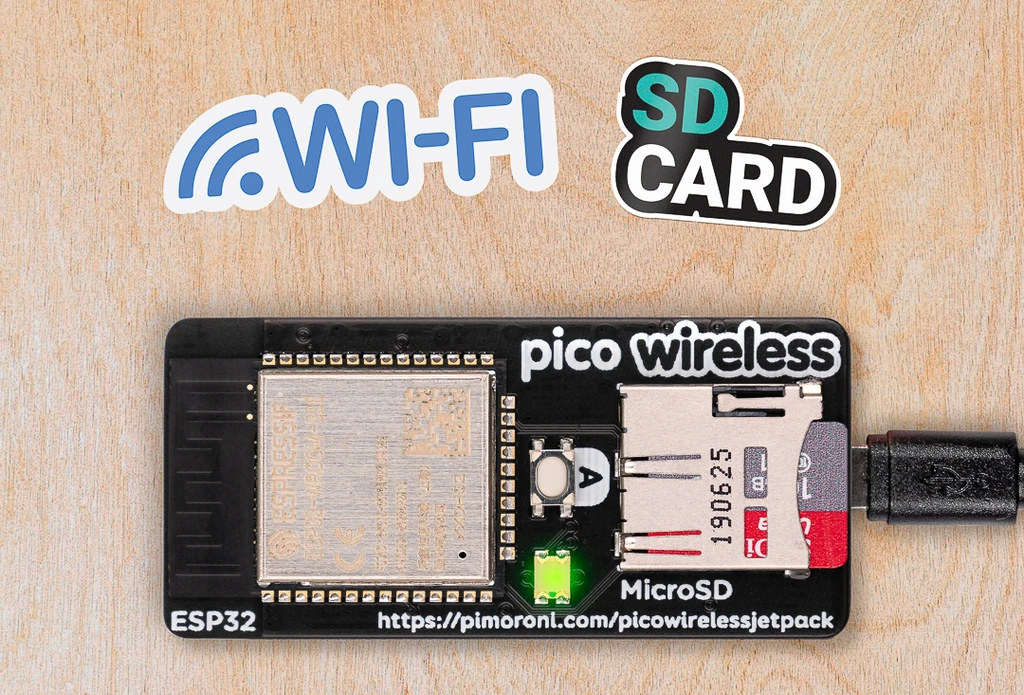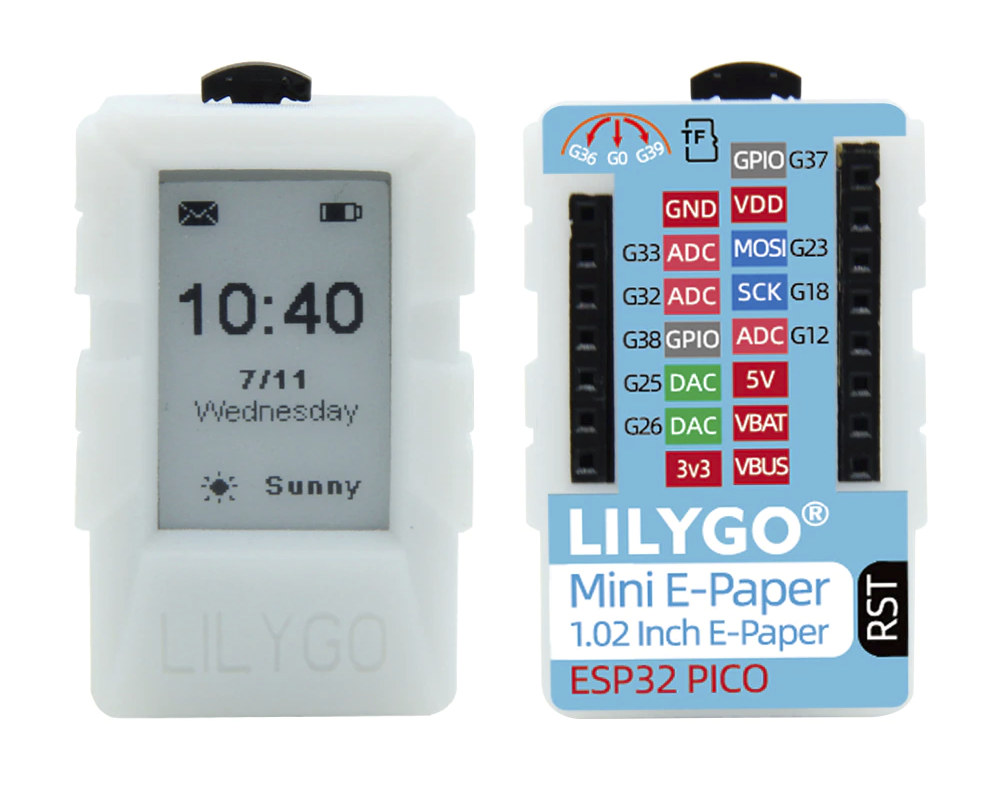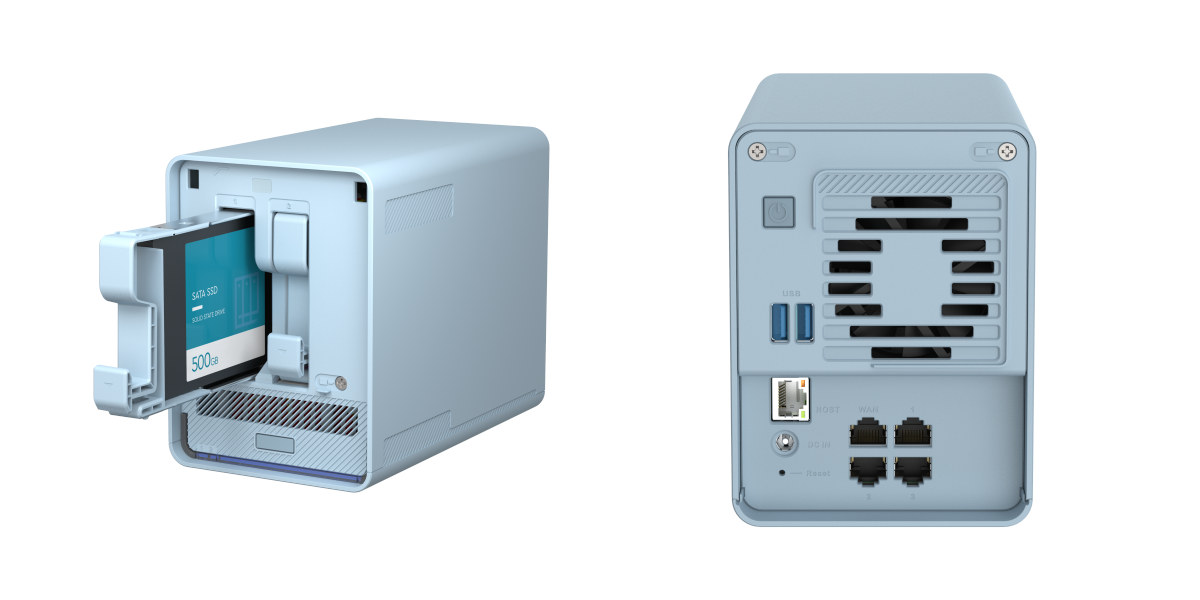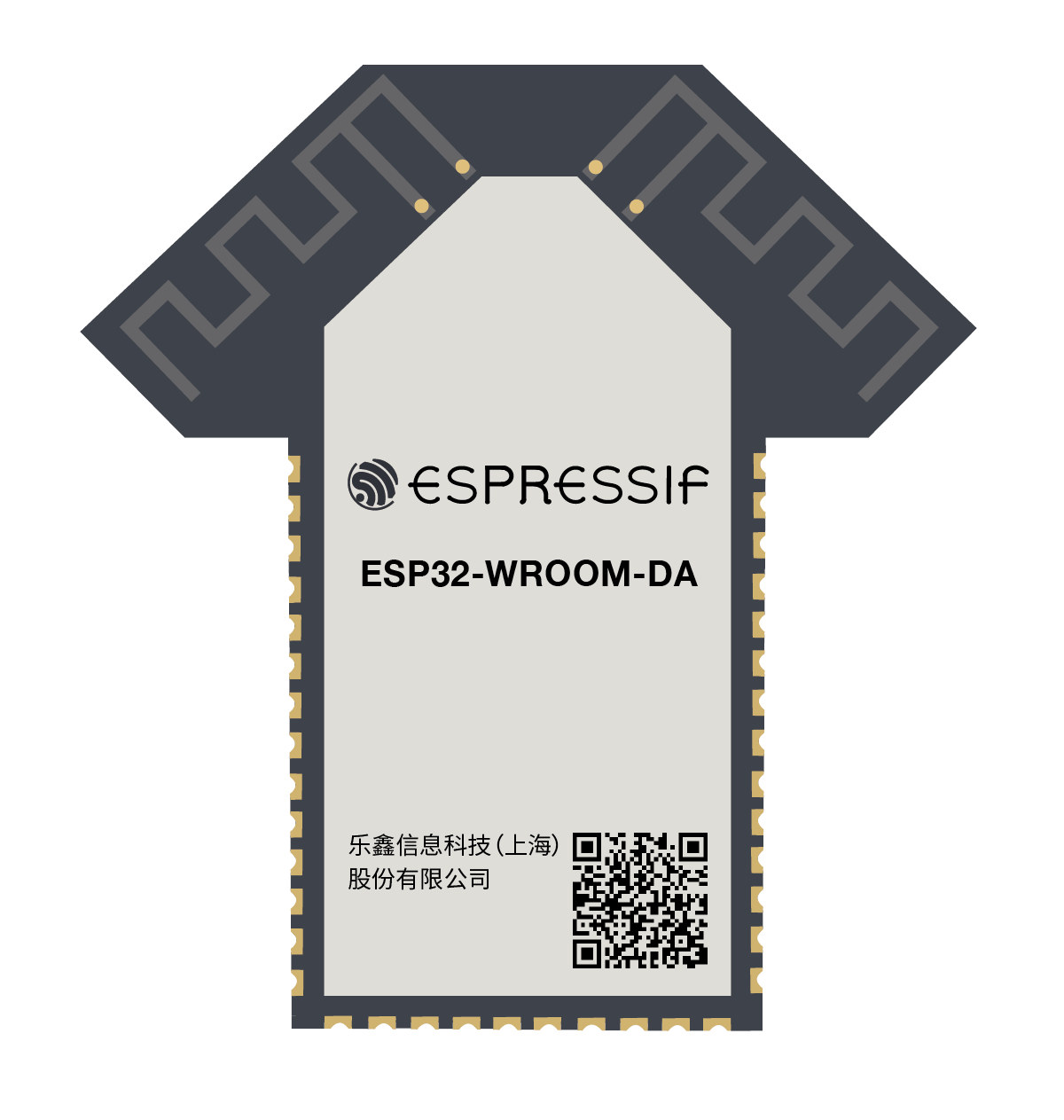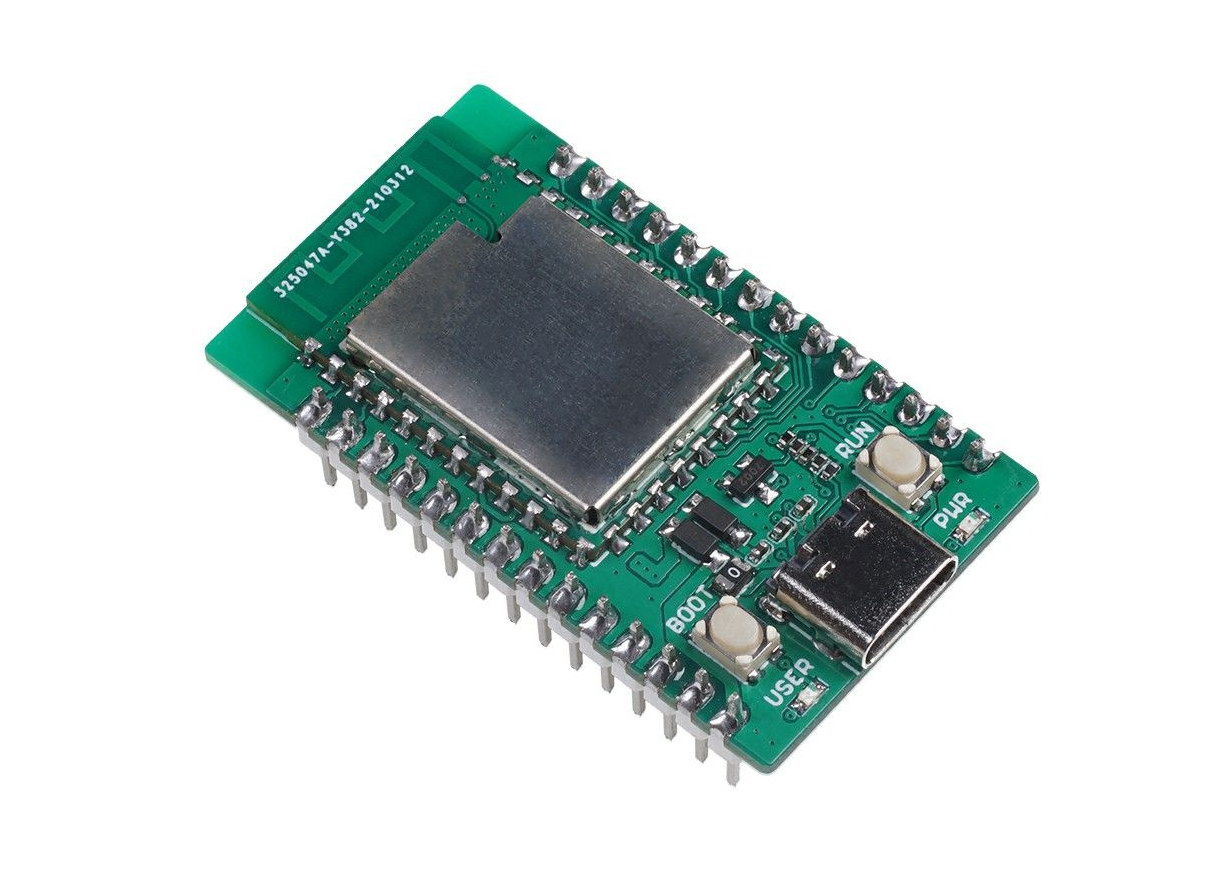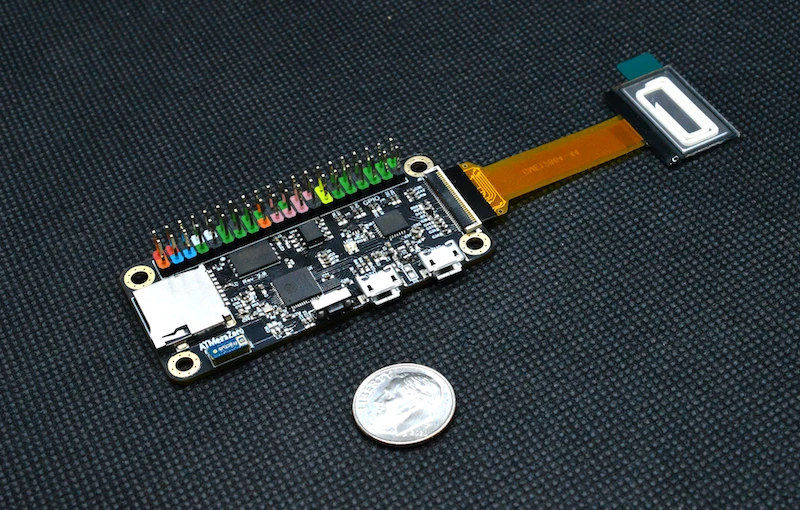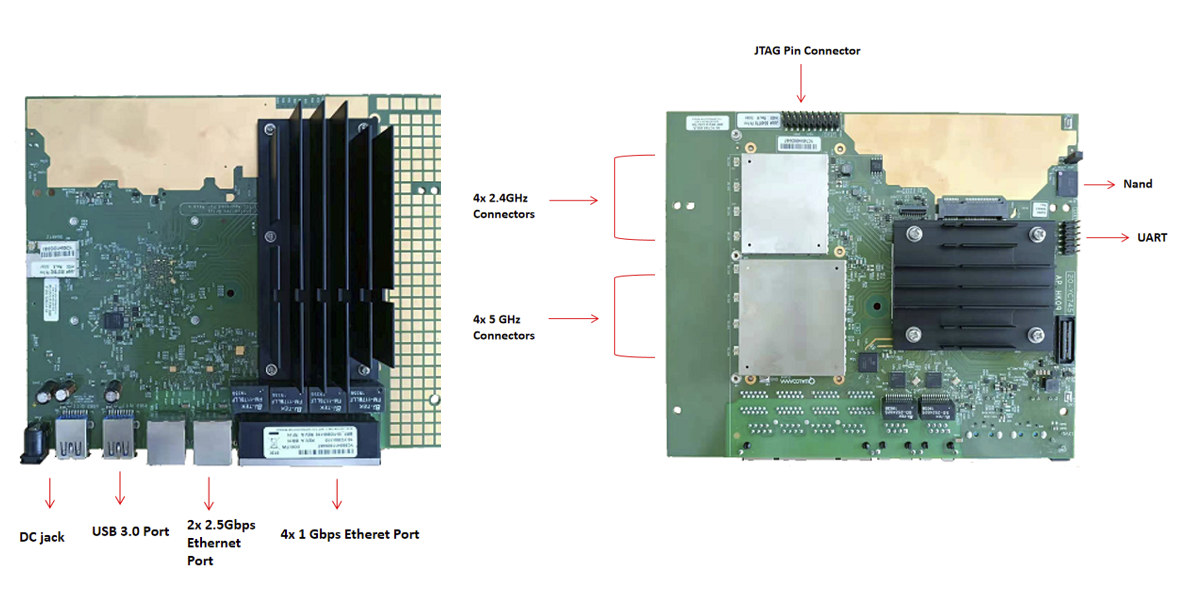M5Stack is known for its ESP32 based building blocks for the IoT with WiFi & Bluetooth wireless connectivity, I/O headers, and block-specific features like a tiny color display, a speaker, a touchscreen display, a camera, and more. The company’s latest product is the M5Stack Atom DTU LoRaWAN Kit based on ESP32 ATOM Lite, as well as ASR Micro ASR6501 LoRa module (SX1302 based) and one RS485 header that allows for industrial communication notably with the Modbus protocol. M5Stack Atom DTU LoRaWAN Kit specifications: Wireless connectivity M5Stack ATOM Lite with ESP32 WiFi 4 and Bluetooth 4.2/5.x dual-core SoC ASR ASR6501 LoRa chip Operating frequency – 868MHz or 915 MHz Transmit power – Up to +21dBm RX sensitivity – Up to -137dBm (SF=12/BW=125KHz) Serial communication – UART 115200bps (AT command) via ESP32 Antenna – SMA antenna connector Power consumption @ 3.3V (from ASR6501 datasheet) Tx @ +21dBm – 106 mA Rx – […]
Pico Wireless Pack adds ESP32 WiFi & Bluetooth module to Raspberry Pi Pico
Pimoroni Pico Wireless Pack is an add-on board for Raspberry Pi Pico adding a MicroSD card socket and ESP32 WiFi & Bluetooth module to the popular MCU board. While it’s a nice idea to add wireless connectivity to Raspberry Pi Pico, ESP32 is a dual-core Xtensa LX6 processor clocked at 160 to 240 MHz with WiFi, Bluetooth, and plenty of I/Os that should be able to handle most tasks better than Raspberry Pi RP2040 dual-core Cortex-M0+ processor clocked at 48 MHz by default, although we’ve also seen it overclocked up to 252 MHz. It comes with female headers that allow it to be inserted directly to the back of Raspberry Pi Pico has shown above, or into a “GPIO expander” board like the Pico Omnibus shown below through an SPI interface. Pico Wireless Pack specifications: Wireless module – ESP32-WROOM-32E WiFi 4 & Bluetooth 4.2/5.x module with PCB antenna, 4 MB […]
LILYGO Mini E-Paper Core combines ESP32 with 1.02-inch ePaper Display in 3D printed enclosure
LILYGO Mini E-Paper Core is another ESP32-based e-Paper display by LILYGO, but it’s a really tiny 1.02-inch e-Paper display housed in a 3D printed enclosure that reminds me of M5Stack Core with a 2-inch TFT LCD. The tiny low-power display also offers a MicroSD card socket, a reset button, a three-way user button, as well as headers for GPIOs, ADC, DAC, SPI, and more. LILYGO Mini E-Paper Core specifications: Wireless SiP – ESP32-PICO-D4 system-in-package with ESP32 dual-core processor, 4MB Flash, 2.4 GHz WIFi 4 & Bluetooth connectivity Storage – MicroSD card socket Display – 1.02-inch e-paper display with 128×80 resolution USB – 1x USB Type-C for power and programming Expansion 7-pin 2.54mm pitch header with 5x GPIO, 2x ADC, 2x DAC, 3.3V, and GND 8- pin 2.54mm pitch header with 4x GPIO, SPI, 1x ADC, 5V, VBUS, VBat, and GND Misc – Three-way toggle button connected to G36, G0, […]
QMiroPlus-201W – Arm router and Intel NAS in one device with Qualcomm IPQ4019 & Celeron J4125
QNAP QMiroPlus-201W is an unusual networked storage device that’s acting both as a 2.5GbE & WiFI 6 router and NAS combining Qualcomm IPQ4019 Arm SoC for the router functions, and an Intel Celeron J4125 quad-core Gemini Lake processor for the NAS functions. Usually, you’d get the choice of either an Arm or Intel processor, but here QNAP decided to use both to keep the same performance as having separate Arm-based router and Intel-based NAS, but in a much more compact form factor. QNAP QMiroPlus-201W hardware specifications: SoC/memory/internal storage For router SoC – Qualcomm IPQ4019 quad-core Arm Cortex A7 @ 716.8MHz Memory – 512MB DDR3 Internal Storage – 4MB SPI NOR Flash & 4GB eMMC flash For NAS SoC – Intel Celeron J4125 quad-core Gemini Lake processor @2.0 GHz Memory – 4GB DDR4 Internal Storage – 4GB eMMC flash Data Storage – 2x 2.5-inch SATA 3Gb/s (Compatible with 6Gb/s SSD/HDD) bay Networking […]
ESP32-WROOM-DA dual PCB antenna WiFi module aims for longer range, better reliability
Espressif Systems ESP32-WROOM-DA is another ESP32 based WiFI & BLE module with a twist as its dual PCB antenna design aims to provides a longer range and more reliable connectivity by automatically switching to a specific PCB antenna depending on signal strength. The new module features ESP32-D0WD-V3 dual-core Xtensa LX6 dual-core processor with a maximum frequency of 240 MHz, along with 520 KB of SRAM and 448 KB of ROM, and has been designed to be pin-to-pin compatible with ESP32-WROOM-32E module found in products such as Pico Wireless, in order to ease migration between the two modules. Espressif did not provide detailed specifications for the new WiFi module, but assuming it’s mostly based on ESP32-WROOM-32E design, ESP32-WROOM-DA should have the following key features & specifications: WiSoC – Espressif Systems ESP32-D0WD-V3 embedded, Xtensa dual-core 32-bit LX6 microprocessor, up to 240 MHz with 448 KB ROM for booting and core functions, 520 […]
A compact Raspberry Pi RP2040 WiFi board – Meet $12.95 Wio RP2040 mini
Seeed Studio has launched another Raspberry Pi RP2040 WiFi board with the compact Wio RP2040 mini development board that provides a cheaper and more compact alternative to ESP32 based Pico Wireless carrier board and Arduino Nano RP2040 Connect, albeit at the cost of providing fewer I/O pins, and lacking Bluetooth LE. Wio RP2040 mini dev board specifications: MCU – Raspberry Pi RP2040 dual-core Cortex M0+ microcontroller up to 133 MHz with 264 kB of embedded SRAM Storage – 2MB QSPI Flash Memory WiFi – 2.4 GHz 802.11b/g/n WiFi 4 supporting AP & station modes USB – USB 1.1 Type-C host/device port for programming Expansion – 2x 14-pin headers with 20x multifunctional GPIO pins supporting PIO and PWM, 2x UART, 4x ADC, 2x SPI, 2x I2C. Misc – Boot & Reset(RUN) buttons, Power and user (GP13) LEDs Power Supply 5V via USB-C port(default) 3.6-5V via Vin header pin Dimensions – 45.5 […]
ATMegaZero ESP32-S2 board supports OLED displays
EspinalLab ATMegaZero board was introduced last year with Raspberry Pi Zero form factor, the Arduino Leonardo compatible, 16 MHz Microchip ATmega32U4 microcontroller, and a connector for an optional OLED display. The company is now back with an update following the same form factor with ATMegaZero ESP32-S2 board equipped with a more powerful ESP32-S2 single-core processor @ 240 MHz with WiFi connectivity, and most of the same features, including OLED display support, plus a micro USB OTG port and an RGD LED. ATMegaZero ESP32-S2 board specifications: WiSoC – Espressif Systems ESP32-S2 single-core processor @ 240 MHz with WiFi RAM – 8MB PSRAM Storage MicroSD card 256Mbit (32MB) SPI Flash (note: only 16MB can be used for now due to firmware limitations) Display – 32-pin OLED display port compatible with 30-pin SSD1306 and SH1106 based displays Wireless Connectivity – 2.4 GHz WiFi 4 up to 150 MHz with 3D antenna USB – […]
DR8072A embedded router board offers dual 2.5 GbE, WiFi 6 connectivity
We’ve previously found Qualcomm IPQ8072A quad-core Cortex-A53 networking processor in WPQ873 embedded SBC with support for WiFI 6, three GbE ports, one 2.5GbE port, and support for 5G M.2 modems. The design was adapted from Qualcomm HK09 reference design, and now another company, Wallys Communications, has launched another board based on HK09. DR8072A embedded router board is somewhat similar to WPQ873, but does come with two 2.5GbE ports instead of just one, one extra Gigabit Ethernet port, among other smaller changes. DR8072A specifications: SoC – Qualcomm Atheros IPQ8072A quad-core ARM 64 bit A53 @ 2.2GHz part of Qualcomm Networking Pro 600 Platform System Memory – 1x 512MB, DDR4 2,400 MHz 16-bit interface Storage – 256MB NAND flash, 8MB NOR flash Networking and Wireless Connectivity Ethernet 4x Gigabit Ethernet RJ45 ports 2x 2.5 Gbps Ethernet RJ45 ports WiFi On-board 4×4 2.4GHz MU-MIMO OFDMA 802.11b/g/n/ax, up to 1182 Mbps, max 17dBm per […]


